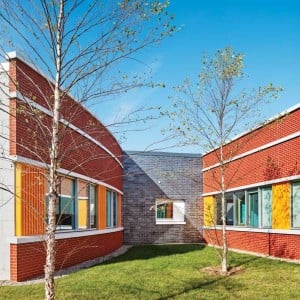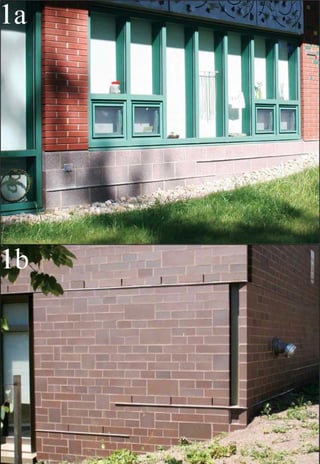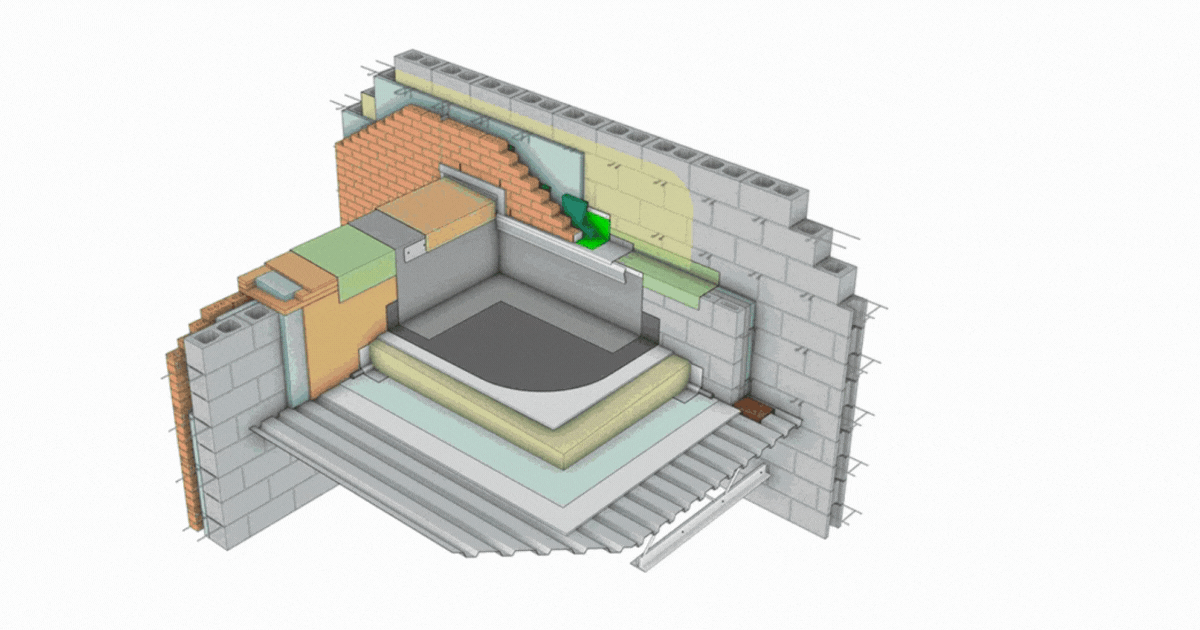
By Richard Filloramo, B.S. Arch, A.S. CT, AIA
This article was first published in The Contrustion Specifier magazine.
Designers are creating new and exciting contemporary masonry designs that demand clean, smooth wall plane elevations. One challenge that can interfere with unobstructed aesthetics is the visual effects of masonry drip-edge flashing. This potential obstacle has also carried through to traditional masonry design. Designers and specifiers can find it difficult to balance design and functional water management requirements.

An exposed metal drip edge diverts water and snowmelt away from the wall below, and prevents it from re-entering the wall. At relieving angles and lintels, a drip edge will direct water away from sealants joints, which can be a source of water infiltration if not maintained over time. Drip edges also:
- protect steel lintels from corrosion;
- help minimize stains on the masonry (especially below louvers);
- provide assurance that flashing has been installed; and
- prevent capillary action of moisture moving up through the masonry (also referred to as ‘rising damp’) when it is in contact with grade.
However, drip-edge flashing at highly visible building locations can create aesthetic concerns, as shown.
New masonry flashing details, materials, and moisture control systems have enabled designers to provide water management solutions without sacrificing aesthetics. This article will provide details, specifications, and explanations for a variety of flashing details that can enable code-compliant water management flashing systems without aesthetic interference.
UNDERSTANDING THE CODES
Chapter 14 of the 2012 International Building Code (IBC) provides requirements for exterior walls. Section 1403.2−Weather Protection requires exterior walls provide:
- a weather-resistant exterior envelope;
- flashing, as described in Section 1405.4;
- a design preventing water accumulation;
- a water-resistive barrier (WRB);
- a means for draining water that enters the assembly to the exterior; and
- protection against condensation.
The rest of the original content can be accessed here.
 Rick Filloramo, IMI Connecticut/Rhode Island Director, is a former masonry contractor, he has a B.S. in Architecture from Ohio State University and an Associate’s Degree in Construction Technology from Wentworth Institute.He has more than 30 years of masonry experience, and is a member of the Masonry Standards Joint Committee.
Rick Filloramo, IMI Connecticut/Rhode Island Director, is a former masonry contractor, he has a B.S. in Architecture from Ohio State University and an Associate’s Degree in Construction Technology from Wentworth Institute.He has more than 30 years of masonry experience, and is a member of the Masonry Standards Joint Committee.




